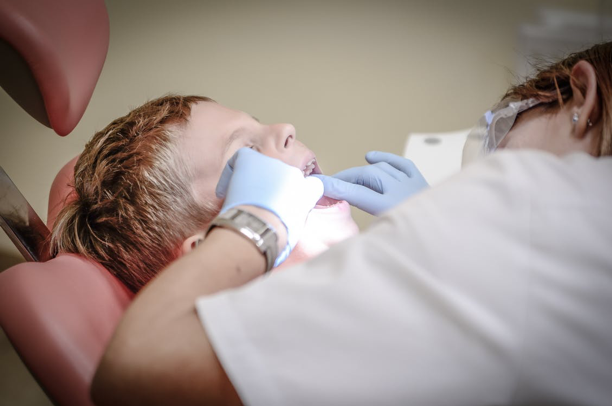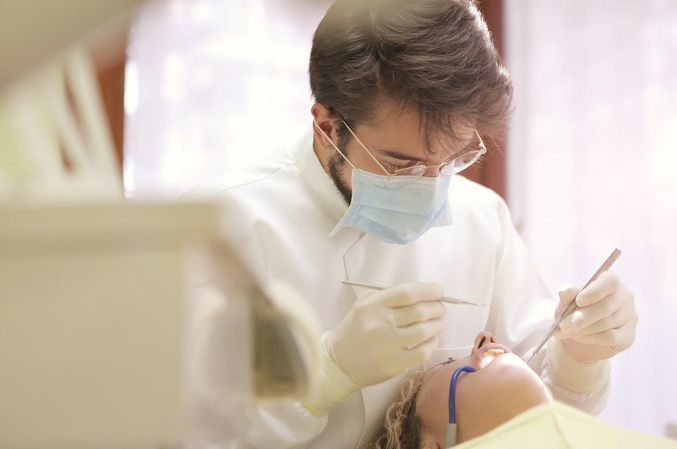Interested in the history of dentistry? Dentists are experts in oral hygiene and health. They analyze your dental condition advise you on treatments to maintain your oral health. Furthermore, they can also help you with oral diseases and infections such as oral cancer. They have the ability to diagnose conditions and even warn about future dental problems. For instance, if you are in the initial stages of developing a cavity, they can identify and help you with prevention. A dentist can guide you to strengthen your gums and teeth.

(Source)
How can a Dentist Help?
Dentistry is a vast field of medical health pertaining to oral health conditions. A dentist can identify and treat different oral conditions. Furthermore, they can perform various procedures such as corrective surgeries, extractions, dental crowns and bridges, and oral examinations. They have the ability to maintain your overall oral health and prevent any disease or infection from occurring.
Why Is Visiting the Dentist So Important?
Visiting a dentist regularly will maintain your oral health and keeps you updated on any up-coming oral infection or disease for in-time treatment. Remember, your mouth is full of bacteria. Whenever you consume food, sugary particles that contain carbohydrates stick to the enamel of your tooth or in between your teeth. This can lead to plaque development within two hours and cause tooth decay and cavity. However, by visiting your Dentist, you can protect your teeth as they:
- Protect you from tooth decay.
- Maintain the strength of your teeth for a beautiful and healthy smile throughout your life.
- Remove stains from your teeth and prevent discoloration of your teeth due to unhealthy habits.
- Increasing confidence level due to white and healthy teeth.
- Protection from various gum diseases.
History of Dentistry
People have been visiting health care professionals for thousands of years. Although there was limited equipment and simpler procedures centuries ago, people would visit special doctors for their tooth decay and other oral problems. In ancient Egypt, people called them toothers, but today, we know them as dentists. To become a dentist today, you have to join college and study the field. However, in ancient history, people used to learn dentistry as an individual or at home from their parents. After the 19th century, many changes took place in the field of dentistry. For instance, we now have anesthesia, X-rays, and electricity, which can help ease dental procedures that you could not find in ancient dentistry.
1. Ancient Dental Practice
In the Baluchistan region of Pakistan, researchers found evidence of dentistry from ancient times. People who lived before 7000 BC also removed their tooth decay. Scientists suggest that they might be using some drill bits to perform the surgery. The evidence was obvious as they found seven teeth with holes. However, there was no evidence of fillings, or maybe the material they used has decomposed in the land.

(Source)
2. Early Greek Dental Practices
Hippocrates (300 BC), who some may know as the father of medicine, introduced various methods of dentistry that we used today. The method was traditional, but the concept was the same. We found evidence from the book he wrote that he introduced various treatments. These included oral tissue cauterization, tooth ointment, tooth extraction, etc. Before his remarkable work in the field of dentistry, the people of Greek used to pray from God whenever they had pain or plaque. Many other philosophers wrote about dentistry, such as Aristotle. Along with developing methods such as using wires to attack wiggly teeth and pulling the teeth with the help of forceps, he wrote about tooth decay, growth, and gum diseases.
3. Barber Dental Practices
In the Middle Ages, monks used to handle all the surgical procedures. They were educated and also had knowledge about dentistry. After monks recieved prohibition from performing these surgeries, barbers started to take over procedures like tooth extraction with their blades. Barbers had experience in using blades and knives. For a long time, they used to help monks with the surgeries. Hence, they were well suited To perform these surgeries.
4. Modern Dentistry
Dentistry developed immensely during the 20th century. A lot of equipment, techniques, and fields have developed, such as pediatric dentistry, oral radiology, and so on, that have changed the way we used to think about this field. The main focus of the change is about developing painless and timesaving methods. Even for cosmetic procedures, new extensions and implants are available now.
History Of Dentistry: Conclusion
Dentistry is not as painful as it used to be. Most importantly, dental crowns, bridges, and teeth straightening are very common now. You can visit our clinic if you want to improve your teeth structure or have experienced an emergency condition such as toothache and bleeding gums.
Contact Ideal Smiles Dental today at 718-535-1196 for an appointment!
Sources
https://www.adea.org/GoDental/Dentistry_101.aspx
https://www.northwestcareercollege.edu/blog/a-brief-history-of-dentistry/
